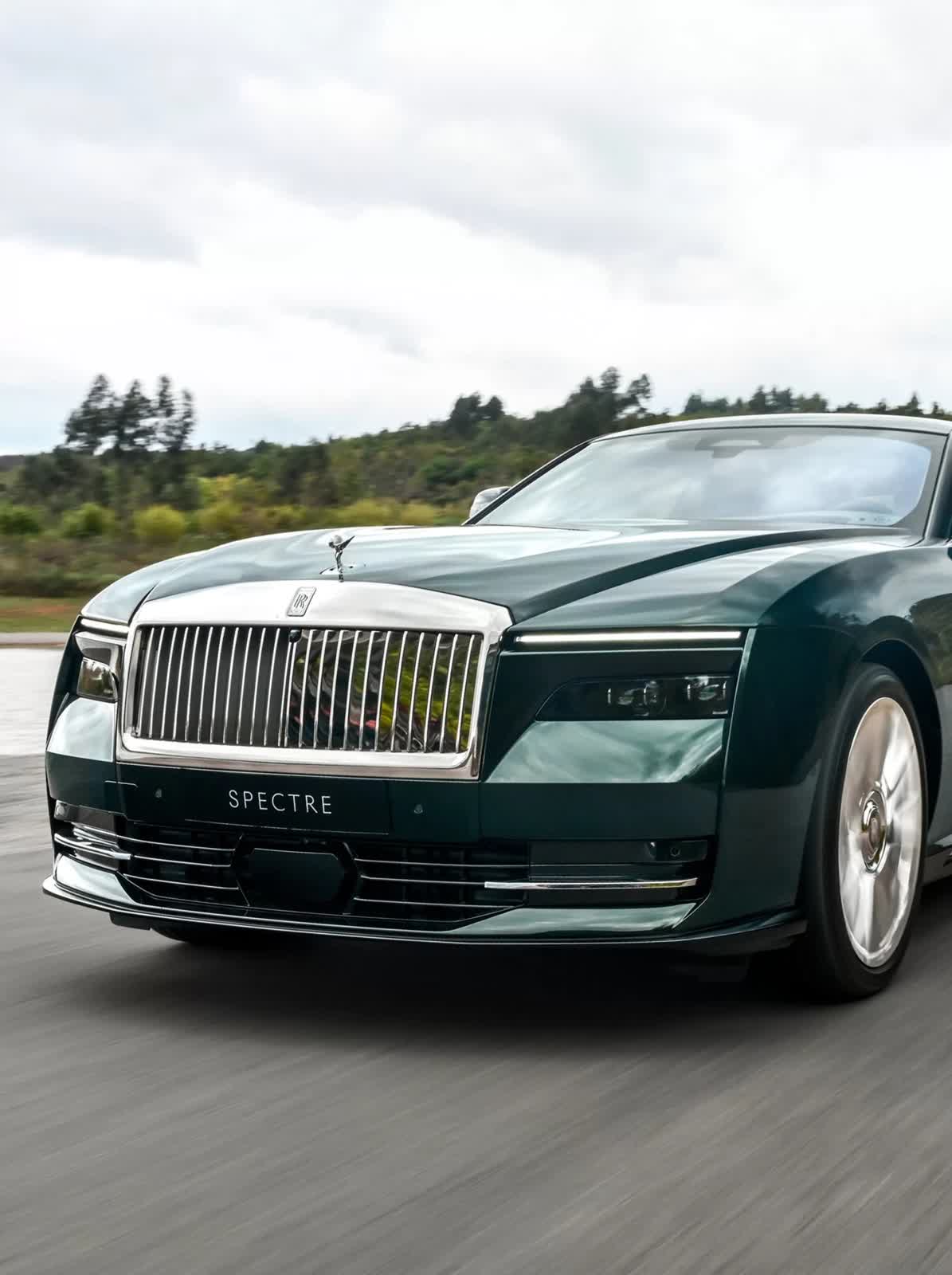www.digitaltrends.com
html PUBLIC "-//W3C//DTD HTML 4.0 Transitional//EN" "http://www.w3.org/TR/REC-html40/loose.dtd" Table of ContentsTable of ContentsWhy do TV speakers suck? (Can we axe them?)More HDMI ports, pleaseTake a pause on Panasonic?On todays You Asked: Why do TV speakers suck and why even bother putting speakers in TVs? Why dont TVs get five HDMI ports? Will Panasonic abandon the US again, and should you even buy one of their TVs?Zeke Jones / Digital TrendsMike writes: Why on earth, in 2025, do TVs still insist on wasting space with built-in, inadequate speakers? I can understand lower budget/entry-level TVs, but if people are spending $2,000+, are they likely using an AVR or soundbar? Id think the added real estate and the cost savings would entice the TV makers to drop the speakers in their higher-end TVs. Plus, they could push their own brand of crappy soundbars. Thanks!First off, not all soundbars are crappy. However, I do understand your point. To address this whole speakers-in-TVs issue, lets talk about TV tuners.RelatedDid you know that in 2016 and 2017 TV brand Vizio removed over-the-air tuners from its M series and P series TVs? This move meant they werent allowed to call them TVs. In the US, the FCC (Federal Communications Commission) requires that to be called a television, a display must have an over-the-air tuner. Vizio had to market them as monitors or home theater displays.Vizio may have thought at the time, Everything is going to streaming now and many of our customers will likely never use a tuner, and besides, you can stream a lot of live TV now, too. Soon, folks wont even need an antenna, so why not stand out by going in a new direction and omit the tuner?Dan Baker / Digital TrendsIf this was Vizios thinking at the time, it seems a bit like an Apple move, right? Apple is all: Were removing the headphone jack from our phones because who uses wired headphones anymore? Everythings going wireless. We have to be bold. We have to have the courage to do this.Except Vizio wasnt Apple, and the consumer reaction to the tuner being removed was not warmly received (which is an understatement). Vizio ended up walking back that decision. Some could argue that was the beginning of the brands decline from a once strong market position. The lesson here: Dont make Apple moves unless you have Apple money and Apple power.Some of us cant imagine having a high performance or high-end expensive TV without a similarly premium audio system to go with it we see the speakers built into the TV as completely unnecessary. However, a reminder: Folks who feel this way are very much in the minority. TV manufacturers actually pay attention to feedback from their customers, especially when that feedback indicates that a decision resulted in lost revenue. They likely know that if they did not include speakers in their TVs, the backlash would be uproarious, and companies cant afford that kind of negative PR. The Vizio situation is likely regarded as a stark example of what not to do.Beyond that, theres not much to be gained by not putting speakers in a TV. It wouldnt lower costs significantly or make the TV noticeably slimmer. Theres really no upside. Omitting speakers is a high-risk gamble that would not pay meaningful dividends.If a TV brand had the same amount of market-shifting power and control as Apple, I suppose they could force people to get supplemental audio systems. Yet, even if they had that kind of power (and they wouldnt), its the kind of bold move that could sink a brand. So, I dont see it happening anytime soon.Which brings us to the question: Why do TV speakers tend to suck? TV manufacturers may have to put speakers in a TV, but that doesnt mean they are motivated to make them great. The speakers need to be just good enough to not piss people off. Theres a big difference between not having something at all and having something that is disappointing but ancillary to the primary function of the device: the picture.Also, consumer obsession over increasingly thin TVs forced manufacturers to come up with audio solutions that fit in very little space. However, transducers by their very nature need some space to sound good. It also helps if they are firing at your ears, as opposed to down at the floor. As manufacturers put weaker and weaker audio systems in their TVs that continued to sell well, they learned that customers would accept paltry audio systems if the TV on the whole was good enough.There are some exceptions to this rule. Some extremely high-end TVs from Hisense, TCL, Sony, and Panasonic include premium audio systems. Sometimes that effort works well, and sometimes it doesnt.Zeke Jones / Digital TrendsA good audio system does add some cost and complexity to a TV, and in some cases it can even be a bit of a gamble specifically, the Panasonic Z95A, which basically has a built-in soundbar strip at the bottom of the TV. It sounds great, but some folks dont love how it looks. It reminds me of when Sony built speaker strips onto the left and right side of some TV models. It sounded pretty good, but folks disliked the look, and Sony swiftly discontinued the practice.There isnt a lot of motivation to outfit a television with a premium audio solution, but theres also a lot of risk involved in not including one at all. It makes sense to take that good-enough approach and leave it at that.Zeke Jones / Digital TrendsDionicio writes: With the high number of devices were able to connect to our TVs, is there any reason why TV manufacturers do not simply add a fifth HDMI port?This is a really interesting question. As part of my answer, I remind folks that, as enthusiasts, we may assume our personal needs or wants are similar to those of the greater public. However, thats just not the case.Anecdotally, I can tell you that many folks dont connect anything to their TVs other than a soundbar, perhaps. The surge in streaming popularity and the convenience of built-in streaming platforms makes it easy to buy a TV and not require another device. Cable and satellite subscribers are dwindling at a faster rate than ever, so those cable and satellite boxes are taking up fewer HDMI ports on TVs. Also, disc players and disc sales are on a steep decline (much to my chagrin).Digital TrendsGame consoles are super popular, and most households have just one and not two, three, or four. Increasingly, more people need just a single HDMI port and a huge chunk of the public dont even use the three or four HDMI ports they have.This is why we dont see more TVs from brands like Sony, Panasonic, TCL, and Hisense including four HDMI 2.1 ports the need doesnt exist at a high enough scale for companies like MediaTek, which makes the System on Chip (SoC) that brands use in their TVs.From a business decision perspective, I think were more likely to see four HDMI 2.1 ports from MediaTek before we see five HDMI ports. Also, this would require a complete redesign of the existing boards to accommodate the space, and that one decision would set off a flurry of TV redesigns. Even small changes at scale take a lot of work.As enthusiasts, its easy to assume everyone else feels similarly and has the same needs and wants as we do. In the same way that most folks dont even want a desktop computer let alone one with a $2,000 graphics card most folks dont require five HDMI ports. So, were forced to use A/V receivers or external HDMI switchers to fill our niche needs. (I like that, though. It costs a bit of money, but thats what this hobby requires.)Digital TrendsPatrick writes: Im still really considering the Z95B. Does the recent news about Panasonic necessarily make this one to avoid? Would FireTV updates come from Amazon?As many TV enthusiasts already know, there is some worry that Panasonic could end up selling off its TV division in about a year or so. This comes from Panasonic Holdings Company President Yuki Kusumi, who made that statement during an online press conference on February 4. Naturally, with the future of Panasonics TV business in question, some are wondering whether it is smart to buy a Panasonic TV.My answer: Yes, I think it is safe to buy a Panasonic TV, and for two reasons one is practically and analytically based and one is more personal (and optimistic). However, I obviously dont have a crystal ball, so dont come at me if you buy a Panasonic TV and then Panasonic exits the US market in a year.Zeke Jones / Digital TrendsNot only do we lack a crystal ball, we dont have adequate insight into the motivation behind Kusumis statement. It is possible he needs it known that he is a smart, practical businessman who is looking at all options that will help ensure the long-term health of Panasonics business holdings, which, by the way, are vast. Simply acknowledging that something is under consideration can give shareholders enough confidence to prevent them from bailing out, further threatening the companys financial viability.Theres no guarantee that a sale is inevitable, and I dont think we have enough information to read this as Panasonic TV is on the ropes. At least I hope not.I do think that Panasonics re-entry into the US market is a sign that the brand believes that if it is successful at regaining part of the US TV market share, it will help strengthen its TV division overall. Given how much it took to make that happen, I take it as a sign that theres more optimism than pessimism around their TV business right now.One way to help ensure Panasonics TVs continue being true Panasonic TVs and not just another brand licensed out to some other manufacturer is to buy Panasonic TVs. They are excellent TVs. I think it is safe to purchase one even if Panasonic sells off its TV division, and, in a possible worst-case scenario, stops sending out firmware updates. The TVs are good enough that they wont need a ton of firmware updates, and any updates to streaming apps will be on the Amazon side. The TV should still be viable for many years.Zeke Jones / Digital TrendsIf we still have die-hard fans of Pioneer Kuro and Panasonic plasmas out there happily rocking their TVs, a Panasonic TV purchased today is going to hold up well at least as well as, if not better than, most TVs produced today. The replacement cycle of TVs is now much shorter than it used to be, but relative to that replacement cycle, I think a Panasonic TV purchase now is as safe as it gets.On a personal note, I hope that Panasonics TV business can stay healthy and see consistent growth in the US market. Competition in this space is a good thing for consumers. On a more practical note, I dont think we have enough information to be forecasting doom and gloom for Panasonic TVs not yet, anyway. Were seeing the kind of headlines that get clicks and theres some merit to the concern but I think its far too early to be forecasting demise.That statement may not age well. I could be wrong. But right now, the way things are going in this world? I am choosing optimism and hard work over pessimism and surrender.Editors Recommendations









